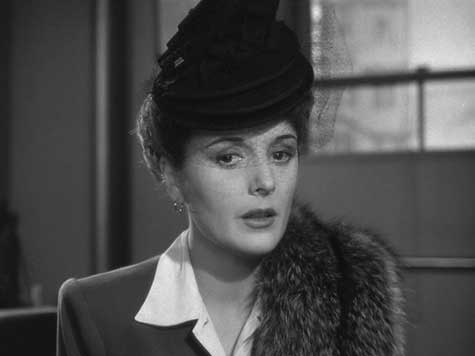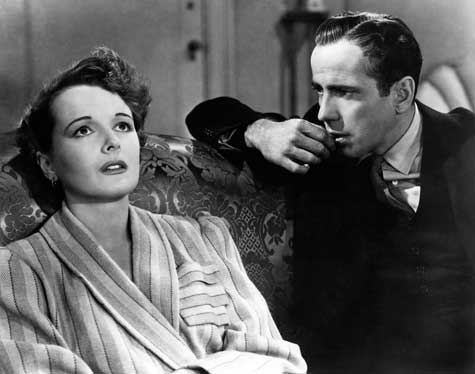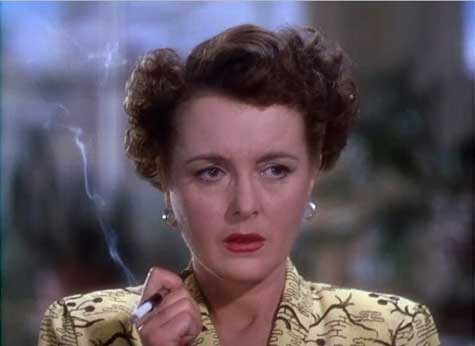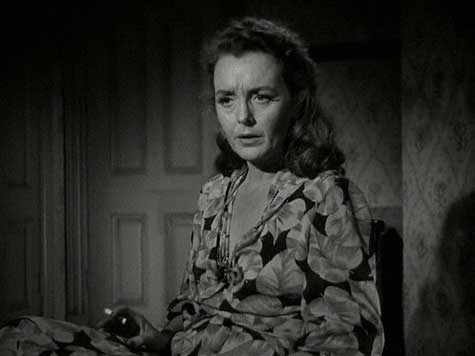
Mary Astor once summed up what she called the five stages in the life of an actor:
Who's Mary Astor?
Get me Mary Astor.
Get me a Mary Astor Type.
Get me a young Mary Astor.
Who's Mary Astor?
Astor was part of the first generation of actors who more or less grew up in the studio system, and maybe for that reason, she viewed movie-land with a particularly cynical eye. Born Lucile Vasconcellos Langhanke in Illinois in 1906, she was shunted into modeling and acting by her ambitious parents and was signed to a Hollywood contract by the time she was 14. “I was never totally involved in movies,” she would later remark. “I was just making my father's dream come true.” After getting started in silents and shorts, she embarked on a career that found her drifting from place to place, always a dependable performer but never really a breakout star. She’d been in the business twenty-one years before she found the role that would cement her cinematic legacy, the conniving femme fatale Brigid O’Shaughnessy in The Maltese Falcon. The film was a big success, and while it sent Bogart’s career into overdrive, Astor went back to being a dependable performer.

Of course, her role in The Maltese Falcon was a pivotal development in film noir. Brigid O’Shaughnessy is the mother of all femme fatales, and every double-crossing murderous lady of the night owes her a debt. Early on in my moviegoing days, I thought Astor was miscast. Maybe that’s because she doesn’t play the role like a femme fatale. She plays Brigid like a lady—except of course for those moments when the façade drops away and she starts kicking and biting. If Astor doesn’t have the raw sexual energy of a Rita Hayworth or a Joan Bennett (both of whom were contenders for the part), what she has instead is mystery. Her Brigid O’Shaughnessy is a closed book. You can never really know her because she’s a woman without a center. I once noted in a review of The Maltese Falcon that Spade can’t be bought with money or sex, but he is nearly done in by his desire to crack the code on Brigid’s mystery. The writer Imogene Sara Smith has correctly noted, “Even more than her beauty, she uses her weakness to appeal to [his] male vanity.” Brigid’s specialty isn’t so much lust as it is her ability to make men feel a need to protect her. In the end, the greatest temptation for Spade, in spite of every lie she’s told him, is to play the sap for her.

She reteamed with Bogart and director John Huston for the uneven war flick Across the Pacific, and by the end of 1942, she was back below the title again in The Palm Beach Story. By 1944, while Bogart was romancing 19-year old Lauren Bacall in To Have And Have Not, Astor was playing the mother of 22-year old Judy Garland in Meet Me In St. Louis. Still, she kept working. She costarred in one of the most ridiculous movies ever made, the 1947 Technicolor noir Desert Fury. A film that deserves to be worshipped by lovers of the overwrought and under-thought, Desert Fury cast Astor as the mother of Lizabeth Scott—who had, just a year before, played Bogart’s love interest in the execrable Dead Reckoning, meaning that in the space of five years Astor had gone from playing the love interest of one of Hollywood’s biggest stars to playing the mother of his love interests. Ah, Hollywood.

She notched one of her greatest performances—in some respects maybe her best performance—in Fred Zinnemann’s 1948 Act Of Violence. Although this film stubbornly remains rather obscure today, it deserves to be included on the short list of the very best (and most fully realized) films of the classic noir era. Van Heflin plays a suburban husband and father who is being hunted by a man (Robert Ryan) for something that happened back in the war. On the run through nighttime Los Angeles, Heflin stumbles into a dive bar and meets a skid row prostitute played by Mary Astor. Nothing else Astor had done previous to this role could have prepared an audience for her work here. It is simple, naturalistic and quietly heartbreaking. She’s neither a whore-with-a-heart-of-gold nor a conniving gold-digger. Instead, she’s a fully formed woman—bitter, sad, and doing what she has to do to survive. It’s a masterful performance.
Offscreen, Astor’s own life was full of problems. Her first marriage, to Kenneth Hawks (brother of director Howard Hawks), ended with his death in a plane crash. During her divorce from second husband Franklyn Thorpe, portions of her diary were leaked to the press (by people working for Thorpe). Astor was humiliated as details of her sex life (including an affair with George S. Kaufmann) became public. Although that scandal blew over, it took something out of Astor. Compounding that pain was an ongoing battle with alcoholism. There were stays in sanatoriums, a suicide attempt, and more divorces. She found a measure of stability with the help of Alcoholics Anonymous and a conversion to Roman Catholicism. She stayed active in films up until the early sixties, giving her final performance in Robert Aldrich’s 1964 Hush…Hush, Sweet Charlotte.
Her final years were spent in the Motion Picture & Television Country House, a retirement community in Woodland Hills. She died there in 1987. In addition to her film work, she left behind two autobiographies, My Story and Life on Film, and five novels.
Jake Hinkson is the author of several novels, including the newly-released The Big Ugly.
Read all of Jake Hinkson's posts for Criminal Element.

Thanks for this. I adore Mary Astor. ‘Across the Pacific’ is far from being a classic movie, but her repartee with Bogart is so stylish and understated. I’m of the opinion they should have been paired many more times. Perhaps my favorite role of hers is the lonely Mrs. Cortwright in ‘Dodsworth.’
Given how closely the [b]Maltesr Falcon[/b] film stays true to the novel, I’m not sure it would’ve mattered who was in the Brigid O’Shaughnessy role as the relationship between her and Sam Spade is literally dictated by the script as depicted in the novel.
Go read the novel and see if you can spot any difference in the film as regards the dialogue!
A wonderful encomium for a too often overlooked actor.
Agree, she was miscast in Maltese Falcon to my taste too. She was no femme fatale and I believe that’s why I don’t love the film. I would have liked to have seen Barbara Stanwyck in the role.